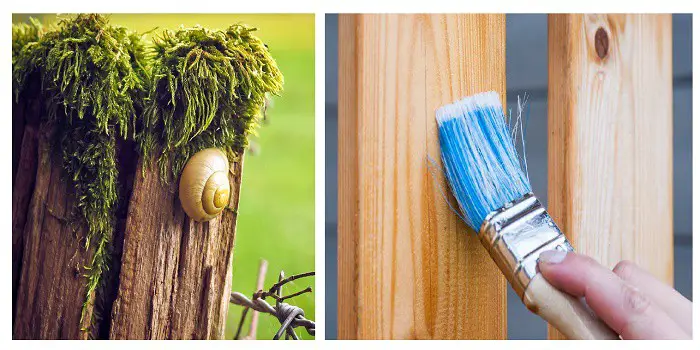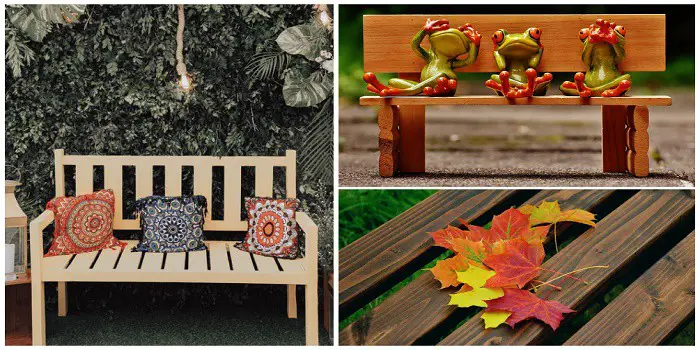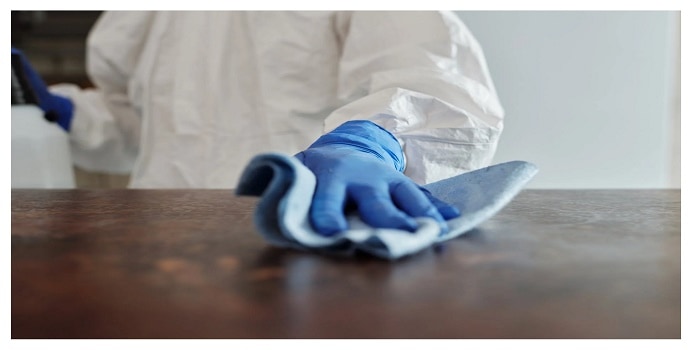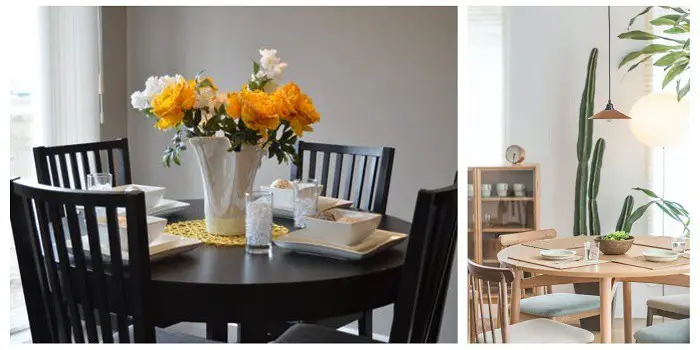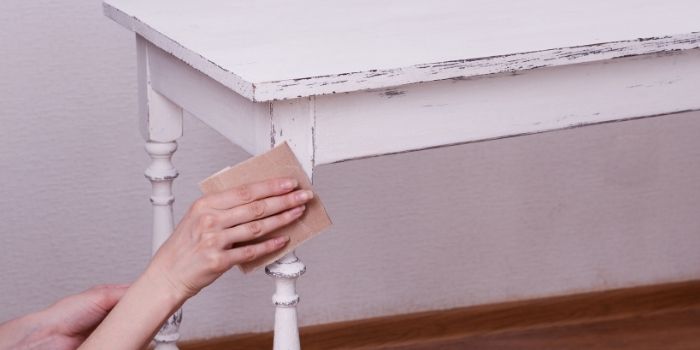
Understanding the way to get chalk paint off of wood can help you eliminate excess or thick layers of paint or even paint splatters.
While applying chalk paint is a fun activity, it can be a headache to get rid of if you don’t have the right tools at hand.
Below, we will take a look at some effective ways to strip chalk paint away from wood without causing any damage to its surface.
But before that, let’s understand when it is necessary for you to remove chalk paint from wood or under what circumstances you may need to strip the chalk paint from your old furniture.
These can usually be due to three conditions…
- When it begins to peel, crack, or is otherwise in bad condition. If you apply chalk paint over an old coat of paint that is in bad condition, it won’t provide the right level of adhesion and will result in an ugly finish.
- When you need to renew the varnish, if the layer of varnish is cracked, has changed color, or is starting to detach, you may need to remove the chalk paint to fix it.
- When applying an incompatible product. This includes things such as chalk paint over polyurethane varnish.
Method 1 – Chalk Paint Stripper
Paint stripping is one of the best ways to get the old chalk paint off wood surfaces.
To get the job done, here is what you need to do…
Step 1. Put all of the tools together that you will need.
This includes protective clothing and eyewear, plastic sheeting to lay under the furniture you’re working on, and the paint stripper and paintbrush for application.
Step 2. Apply a generous coat of paint stripper (soy gel paint removers or citrus-based paint removers are safe to use) to the furniture using a paintbrush.
Follow the waiting time suggested by the manufacturer on the container of the paint stripper.
Generally speaking, you should let the paint stripper sit for half an hour to an hour.
Step 3. The chalk paint will, by now, be a little creased and fluffy.
You can now use a scraper or putty knife to lift as much of the paint away as you can. Do so using steady but gentle pressure.
Step 4. Dip the scrubber pad in a soap mixture and then scrub off any remaining stubborn paint.
You can strip any remnants from that using a scrubber pad, soapy water, or steel wool.
Wipe it down with a damp cloth and repeat the process as needed.
Step 5. After the furniture has completely dried for 24 hours, sand it down using fine-grit sandpaper.
This will ensure there is no more chalk paint on the wood and will smooth out the paint marks left from scrubbing. Remove any dust with a damp cloth.
If you aren’t sure what kind of finish to use, add a minimum of three coats of Danish oil to the wood using a lint-free cloth.
This will protect it from stains while also showing the natural tones of the wood.
Precautions:
- Choose an eco-friendly paint thinner when possible.
- Protect surfaces to prevent damage caused by splashing paint remover or splatters.
- Work in a well-ventilated area and wear protective gear to limit exposure to chemicals.
Method 2 – Sanding the Chalk Painted Furniture
Sanding is an easy and natural way to get rid of chalk paint on wood, but it can be time-demanding. Here is how to sand both small and large wood projects…
Step 1. Gather your tools. Once everything is assembled, you can put on your protective gear and double-check that the room is well-ventilated.
Now is also the time to remove any items on the floor that could get in your way.
Step 2. Place some turpentine in a container and then dunk a cloth into it. Rub the surface you want to sand with the moistened cloth.
This will help remove any wax from the wood before sanding. Remove as much as possible and allow the surface to dry completely.
Step 3. Ready an electric sander by adding coarse-grit sandpaper. This will help you get into the thicker layers of chalk paint.
Be sure you sand along the grain. As you sand, you can vacuum at the same time to limit the dust collected.
Step 4. Replace the old sandpaper with new pieces, if needed, to complete the sanding process.
Step 5. Swap out the coarse grit for increasingly finer grits as you work.
Use finer grit sandpaper on the old paint layers that are thicker, as this will more swiftly begin to show the wood below.
If the power sander can’t get to the paint in the crevices, it’s okay; just try to sand off as much as possible.
Step 6. Vacuum away any loose dust from the sanding and then wipe the wood down with a damp cloth.
Step 7. Use a handheld sander to scrape any stubborn paint from the wood. You could also use a scrubber or wire brush with soapy water for the same effect.
Step 8. Wipe down the wood using a damp cloth to show any remaining areas with chalk paint after each scrub. Repeat this until you are happy with the results.
Step 9. Use another finger-grit sandpaper for sanding down the whole piece of wood after it has dried.
During this time, you will work to get a smoother and more even wood surface.
Step 10. Remove paint debris by wiping the wood down with a wet towel.
Then, use a clean, dry paper towel to remove moisture and excess water. Allow the wood to air dry. Then, clean your tools and workspace.
Step 11. Finish the wood however you like. You could also apply Danish oil to the wood in the meantime to keep it moisturized.
Precautions:
Sanding will expose you to a lot of dust. You should:
- Seal off any items you don’t want the dust to cover.
- Wear protective clothing and eyewear, if desired.
- Replace sandpaper as often as possible since it will quickly get clogged.
- Be sure the area is well-ventilated.
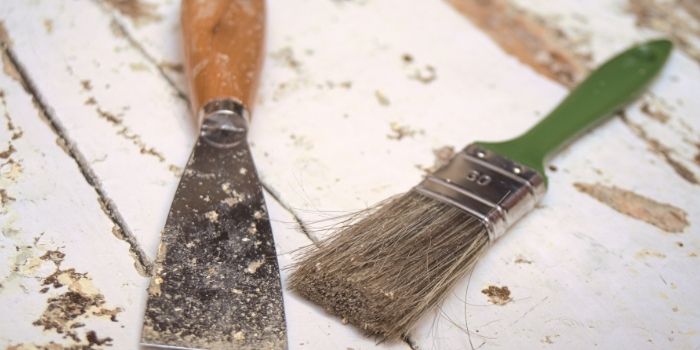
Method 3 – Using the Solvent to Remove Chalk Paint
Much like sanding, using paint solvent is another labor-intensive method of stripping away chalk paint from wood.
Because chalk paint is water-soluble, it is possible to rely only on water for this method.
You can also use white spirits or mineral spirits for this method (see step 4.)
Step 1. Wet the paint using plenty of warm water and soak the wood to start to loosen the paint.
Step 2. Scrub away the paint using a scrubbing sponge, doing one section at a time.
Consistently dip the sponge into a water bucket to help the paint stay loose as you scrub.
Change the water and sponge as often as you need to, but remember that a fresh sponge and clean water will make the job easier.
Step 3. Wipe down the scrubbed area using a wet cloth to show the rest of the remaining paint.
Step 4. Scrub the paint even more, using white or mineral spirits and some steel wool.
This is a much stronger solution than water when you need to dissolve the paint. Strip away any of the stubborn paint this way.
Step 5. Rinse off the wood surface using water to remove the excess paint and moisture using a dry cloth.
Step 6. Let the entire wooden surface air dry.
Step 7. Smooth out the wood by using fine-grit handheld sandpaper. You could also use an electric sander.
Step 8. Wipe down the sanded wood using a damp rag. Allow it to dry.
Step 9. Put a minimum of three coats of Danish oil on the wood to finish using a lint-free cloth.
Method 4 – Using the Heat Gun On Chalk Painted Wood
Using a heat gun is a good way to remove paint from your old wood furniture without using any chemicals. This will help you avoid contact with toxic dust, and the potentially toxic fumes that paint strippers generate.
This is a good approach for use on both thin and thick layers of chalk paint. If you lack a heat gun, a heavy-duty hair dryer may do the trick.
Step 1. Place the heat gun approximately eight to ten inches above the wood, holding it at a 45-degree angle.
Work on a small section at a time until the paint starts to wrinkle.
Step 2. Use a metal putty knife to gently scrape away the paint after it starts to wrinkle.
Scrape following the wood grain to avoid gouging the wood.
Step 3. Repeat this process for every part of the wood that has chalk paint to remove as much paint as you can.
Step 4. Remove excess stubborn paint on the wood by sanding it down.
This will also help you get an even and smooth wood surface. You can scrub the remaining dry chalk paint from the wood using soapy water or mineral spirits.
Step 5. Wipe away any of the dust and chalk paint residues using a damp cloth. Let the wood air dry completely before you move on.
Step 6. Finish the wood any way you like. If you don’t know what to use, just apply a few coats of Danish oil to the wood.
Step 7. Get rid of extra paint and debris and clean up the work area.
Precautions:
- Wear goggles or a face shield to protect your eyes.
- Wear heat-proof protective gloves, ideally made from leather.
- Keep a fire extinguisher nearby for safety.
- Try not to heat the paint for a long time; this could burn the wood.
In Conclusion
Of the many different methods discussed to remove chalk paint from wooden surfaces, many consider the paint strippers to be the best option, as it is the most potent solution and therefore seems to work more efficiently.
Any of the options will work fine, however, and all of them will require a little bit of elbow grease to get the job done.
Whatever method you choose, it is most important that you take the necessary precautionary steps to protect yourself from chemicals, fumes, and dust.
Share the post "4 Effortless Ways to Remove Chalk Paint from Wood Furniture"

Hi, I am Mark Garner a professional carpenter, woodworker, and DIY painter. I live in the small city of Peoria, Arizona as a semi-retired woodworker. I have started this blog with a simple motive to help you with my wood experience in this sector. If you like to know more about what I love doing and how it all got started, you can check more about me here.

